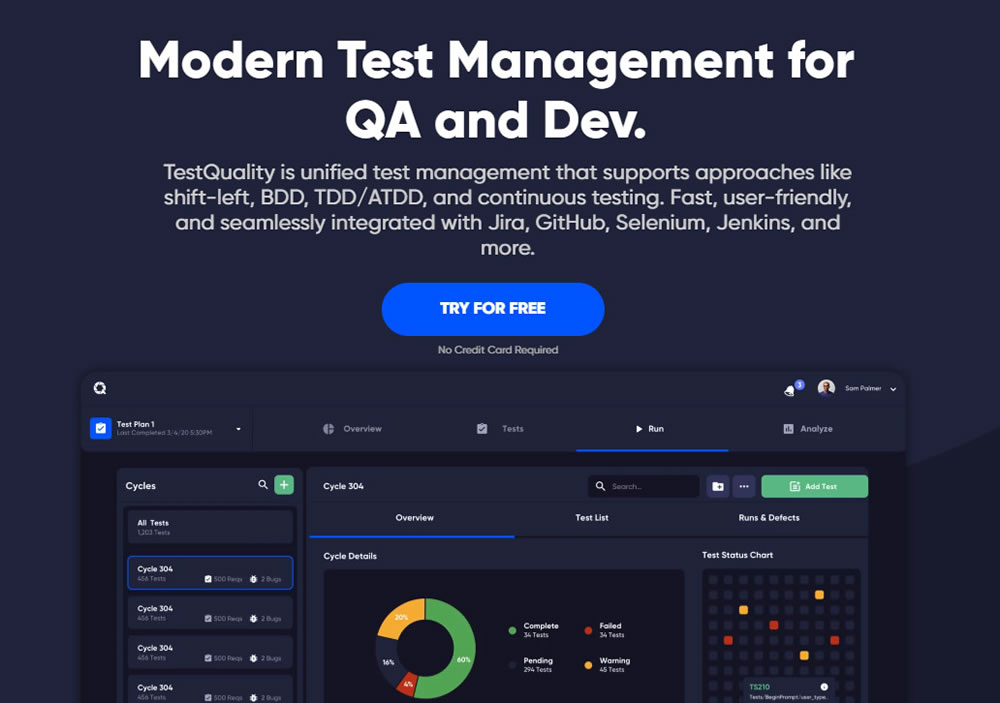Introduction
Software development that is both efficient and effective is becoming more important as the world becomes more dependent on technology. To guarantee that systems and applications perform as expected, software testing is an essential part of software development.
Businesses are starting to use generative AI more and more as a result of the fast development of AI. Automating software testing is only one example of how generative AI is improving efficiency and reducing costs.
Here I'll go over several ways generative AI may speed up the software development process and automate software testing.

Use Generative AI to Guarantee Software Security, Performance, and Quality
The role of software testing is evolving due to generative AI. Automating software QA testing and speeding up regression, unit, and UI/UX testing are also possible with this technology. One use case is the generation of requirements via the use of a Gherkin script that builds a model.
GitHub Copilot is only one example of how generative AI may be used to generate a System Under Test (SUT) but also improve software developer's productivity. According to a GitHub Copilot AI research study the use of AI improved developer satisfaction since between 60–75% of users reported they feel more fulfilled with their job. Also, the study reported that it helped to Conserve Mental Energy since software developers considered that GitHub Copilot helped them stay in the flow (73%) and preserve mental effort during repetitive tasks (87%).
Among Google's most recent initiatives is Google Bard, which is said to be their response to OpenAI's GPT-4. Bard is a revolutionary method for creating chatbots and content that relies mostly on LaMDA, a state-of-the-art paradigm based on transformers that attempts to encourage more natural and open-ended discussions with computers.
You may also create API and user interface tests, both manually and automatically, in addition to security and performance non-functional tests. More efficient production is the end result of this method's ability to help software development teams find bugs early on.
Accurately Anticipate User Experiences Using Actual Customer Data
The ability to anticipate user journeys is a major advantage of artificial intelligence (AI) in software testing and development as it allows engineers to evaluate the whole user experience. Modern image recognition and computer vision systems can detect on-screen items and simulate human input. This method produces actionable consumer insights that may inform the development of operational-phase Digital Twins.
In general, the QA process may be accelerated and testing automated with the use of AI-powered software test automation tools. Better software quality is the end result of shorter and more effective software development cycles made possible by this. Furthermore, development teams may use generative AI to find defects and difficulties early on, which cuts down on debugging time and costs.
Generative AI: What Comes Next
It is now much simpler for software developers to choose the best generative AI solution for their given case since there are several options accessible. The possibility that developers will discover a customized solution that suits their software testing requirements is increased since there are over 500 generative AI businesses that have invested a combined $11 billion.
The highest ever financed artificial intelligence (AI) enterprise was ChatGPT, developed by the OpenAI initiative and the AI market is expected to grow from $86.9 billion in 2022 to a staggering $407 billion by 2027.
A global investment of this magnitude highlights the immense importance and promise of generative AI, as well as its anticipated broad adoption. Among AI software, hardware, and services segments, AI software accounts for the largest market size. The AI software market is predicted to reach $126 billion by 2025.
Automating software QA testing and speeding up regression, unit, and UI/UX testing are also possible with Generative AI technology.
The most typical difficulties that Generative AI faces
These below are a few of the most typical difficulties:
1. Failing to Acknowledge User Intent: One common pitfall of human language is the complexities, irony, and idioms that may make it hard to grasp and respond appropriately to user intent.
2. Lack of Contextual Understanding: Although GPT is capable of generating reasonable responses, it often fails to fully understand the broader context that people inadvertently provide when conversing. This leads to answers that are not correct.
3. Ethical Considerations: Since their outputs are based on input data, which may include prejudices, there is a danger of creating information that is hurtful, improper, or prejudiced.
4. Data Quality Dependence: These models' performance is affected by the amount and quality of training data. As always, "garbage in, garbage out" is applicable.
Artificial intelligence conversational models need constant improvement to address these objectives by enhancing comprehension and contextual understanding. To ensure that AI does not learn from inappropriate material, it is necessary to implement stringent ethical standards for AI use and to regulate training data with great care.
Some Generative AI Advantages Related to Software Testing
Software testing can benefit from Generative AI in relation to the following processes:
1. Test case generation: with a large set of inputs, it creates a number of possible test cases.
The construction of test automation scripts is a breeze, and they help reduce human error by automating dull and repetitive processes.
2. Constantly revises test techniques in response to new information or changes to the project scope.
3. In the event that the app or program is updated or new features are added, the produced test cases are adjusted accordingly.
4. Updates for test automation: Records scripts for automated tests in case any modifications are required as a result of system upgrades.
5. Client chat support: uses language processing skills to provide real-time replies and quickly address client difficulties.
The use of Generative AI techniques allow for early and fast bug discovery, which improves product quality overall and saves time and money.

Amazing Automated Testing Made Possible Thanks to ChatGPT
Software testing is about to undergo a paradigm shift thanks to artificial intelligence, and more specifically generative AI. Software development teams may save time and money and increase productivity with its automation features that automate software testing, such as user behavior prediction, early defect identification, SUT generation, and Digital Twin creation. This speeds up the QA process.
Everyday chores like exploratory testing, automated testing, and performance security are made easier with the enhanced testing capabilities that generative AI provides.
In particular, generative AI has the potential to greatly improve software product efficiency and quality while also speeding up software development. To achieve these goals and advance software design, it may be necessary to include generative AI into testing capabilities.
It is possible that generative AI is the game-changer we were unaware we needed until now. Embrace these remarkable breakthroughs and let yourself get carried away by progress.
Still, we anticipate the greatest impact from the core AI models (GPT4, Sage, Claude, or Bloom) used to build tools like Chat GPT. These models will roll out in waves and find their way into many different products.
The creation and modification of test scripts is the most obvious use, followed by the utilization of test data.
There is a way to translate selenium code from Java to JavaScript, for instance. It may not be entirely accurate and may need human intervention to fix and enhance... It was the one who did most of the work, however.
Building an AI that can accurately generate and modify test scripts is one of our main areas of interest here at TestQuality. In our opinion, the end goal is to have a discussion with a bot about how to construct test scripts and how they might be enhanced. (Applied to your whole test code, albeit it is conceptually similar to the code translation shown above).
In conclusion
Generative AI might be helpful in certain cases, however right now the test script has to be reviewed and validated by a QA expert or test coder. Generative AI might, needless to say, be quite efficient. Failure to do this might result in wasted time. It could take more time and money to correct a problem if the development team doesn't detect it.
The development of generative AI, natural language processing, and associated technologies has allowed them to serve useful purposes however, bear in mind that we are just now discussing their inception. In the case of Chat GPT is now useful for coding, and it will only become better with time; further AI tools will most likely be available in the future.
Building an AI that can accurately generate and modify test scripts is one of our main areas of interest here at TestQuality. In our opinion, the end goal is to have a discussion with a bot about how to construct test scripts and how they might be enhanced. (Applied to your whole test code, albeit it is conceptually similar to the code translation shown above).
TestQuality can simplify test case creation and organization, it offers a very competitive price used within your GitHub workflows or Jira Test Management providing Rich and flexible reporting that can help you to visualize and understand where you and your dev or QA Team are at in your project's quality lifecycle. But also look for analytics that can help identify the quality and effectiveness of your test cases and testing efforts to ensure you're building and executing the most effective tests for your efforts.






